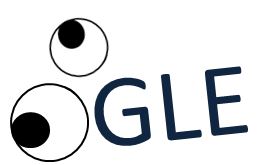4 New Google Shopping Features Help You Ogle Competitors


Google Shopping got a bit of a face-lift this year with the user friendly improved Google Shopping campaigns structure. Currently in beta, the new Google Product Listing ads (PLAs) structure adds a couple of features which provide more insight for advertisers on other advertisers campaigns.

The new Google Shopping campaigns structure introduces new competitive metrics which allow advertisers to get more information on their competitors metrics than has ever been available on Product Listing ads .
The Benchmark CTR & Max. CPC columns which will be displayed by default in your campaign will show you how other retailers with the same or similar products are performing. Google will tell you what their average CTR is & what they’re bidding so you can see how your bids stack up with your competitors.
Max. CPC columns will show you the average bid and average CTR of other retailers with the same or similar products. They’ll also show you Impression Share which is the percentage of times your ads were shown for eligible searches.
They’ll also show you Impression Share which is the percentage of times your ads were shown for eligible searches. For example if your impression share is 50%, it means that your product ad is being shown half the time for relevant searches. A low impression share could mean that you’re not bidding high enough to be shown for a high percentage of searches, but it could also mean that you have a poor data feed leading to lower rankings on Google Shopping.
“Coming soon, you’ll have… a bid simulator will help you estimate the amount of impressions you’ll receive as you adjust your bids.” – Google
The other new feature is the Products Tab, which is particularly helpful for advertisers and those working with datafeeds . This tab has all the info for every product you’re submitting to the Google Merchant Center. So if you’re ever unsure of what info you’re including for a particular product like what the ID is, what the Brand is, etc. you can look that up in the Products tab. It’s a great way to get some more insight into how the data you’re sending looks to Google.
The New Google Shopping campaign structure also allows you to exclude products from product groups. Learn more about exclusions here.
1. Sign up for Google Shopping campaigns (remember it’s in beta right now).
2. Learn about how to change your data feed and structure product ads
3. Increase bid levels for Google. Retailers are going to have the ability to get more sophisticated with their campaigns, so expect CPC and bidding wars to be the norm.
